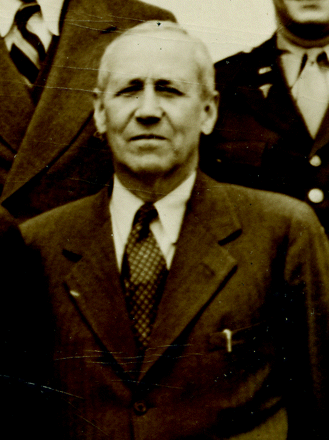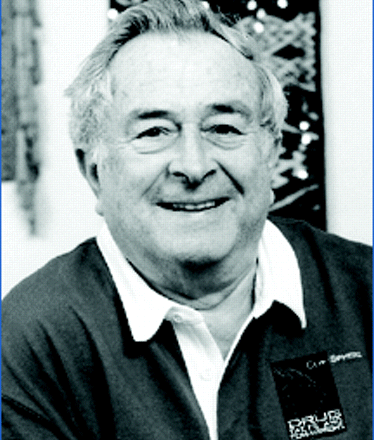The Problematic Placebo
Although Latin as a spoken language has died, the word “placebo”—meaning “I will please” — lives on, enjoying wide usage among both scientists and non-scientists. It was first preserved in the Roman Catholic vespers for the dead, in the recitation of Psalm 116:9. Literally, this verse reads “I will walk before the Lord in the lands of the living.” The Vulgate, the first Latin translation of the Bible, renders the first verb as “Placebo,” presumably because one “walks” before the deity by living and acting in a way that pleases Him. In English, in the fourteenth century, the verb was transmuted into a noun meaning a toady, a flatterer, or a hanger-on (1, 2). In Chaucer’s Canterbury Tales there is a character named Placebo, who exemplifies this meaning by telling the protagonist exactly what he wants to hear (“The Merchant’s Tale”).
Placebo’s modern definition first appears in 1811, as “any medicine adopted more to please than to benefit the patient.” One can thus visualize a nineteenth century Harley Street physician, importuned by a patient he considers a hypochondriac, writing a prescription for “Placebo,” thus signaling the apothecary to dispense a pill or a “draught” containing no medicinal ingredients. The patient, not understanding Latin, would leave satisfied, and often would even feel that the medicine was helping.
A brief yet highly informative paper on the placebo was published in 1945 by O.H. Perry Pepper, a Philadelphia physician and professor of medicine (3). According to Pepper, placebos were frequently prescribed in the nineteenth and early twentieth centuries, although the word “placebo” never appeared on prescriptions. All prescriptions were written in Latin, thus a doctor would often write for some bitter or vile-tasting preparation with an impressive Latin name, for example, “Fluidextract Cimicifuga Nigra.” This was not done to enjoy a private laugh at the patient’s expense. Indeed, Pepper gives a number of legitimate reasons for the use of placebos. Pending a firm diagnosis, or while test results are awaited, a placebo would make the patient feel that some action was being taken, thus soothing anxiety. In some cases, no medication was required, but the patient would not be satisfied just to wait for symptoms to subside. When the patient’s condition was incurable, a placebo might postpone the need for sedatives or lesson the amount of opiates needed for pain relief (3).
Pepper considers placebo use to be part of the art of medicine, but notes that it was not mentioned in any of fourteen editions of a standard text on therapeutics, published between 1875 and 1908; nor could he find any listing of the topic in his search of medical indexes. He remarked that placebo seems a word not to be mentioned “in polite society” (3).
As if to counteract this situation, a Conference on Therapy, held in 1946, by Cornell Medical College and The New York Hospital, was devoted to the subject of placebos (4). It was, by then, generally accepted that placebos sometimes appear to produce a therapeutic effect, or even an adverse effect — both probably owing to psychological causes, including the power of suggestion. The notion that placebos have more effect on patients of low intelligence and little education was refuted by a conference participant who showed, by examples from his practice, that bright, highly accomplished people are very suggestible, and thus, easily affected by placebos (4).
Whereas much of the largely botanical materia medica in use in the 1940s was of little value, the succeeding six decades have brought a flood of new drugs having undeniable pharmacologic effects. It seems unlikely that doctors could have deliberately prescribed placebos within these last sixty years especially as yesteryear’s paternalistic medicine has been largely replaced by a patient-physician partnership. Nonetheless, the placebo has not faded away to an archaic curiosity. It has been addressed in research papers and popular articles and has been the subject of many books. Scientific studies have sought to explain the putative placebo effect, and other studies have been adduced that deny its existence. Meanwhile, the placebo has taken on a new, essential role in the development of new drugs. These aspects of the placebo are explored below, referencing some of the major publications on the subject.
Can The Placebo Be Medicine?
Intuitively, the placebo response must be psychosomatic —a result of what is vaguely called the mind-body interaction. One of the first investigations into the mechanism of the placebo response was conducted by Louis Lasagna and colleagues at the Massachusetts General Hospital in Boston (5). They aimed to determine whether there was a subset of patients who consistently responded to placebo, and how such responders might differ from non-responding patients. They studied post-operative pain, a condition in which three or four of every ten patients experienced relief after injection of a saline placebo. Lasagna and colleagues carried out a two-part study under a rather complex protocol on a total of 162 patients who had undergone general, gynecologic, orthopedic, or urologic surgery. In sixty-nine patients who had received at least two placebo injections, they evaluated the consistency of the placebo response, with the following results:
| Inconsistent reactors (placebo sometimes effective) | 38 | (55%) |
| Consistent reactors (all placebo doses effective) | 11 | (16%) |
| Consistent non-reactors (placebo never effective) | 20 | (29%) |
Every patient was evaluated psychologically through patient interviews, nurse questionnaires, Rorschach test, Thematic Apperception Test, and IQ test. On average, the IQs of responders and non-responders were identical. In the Rorschach test, six signs were found common to 60% of responders but absent in all the non-responders. The interviews revealed a number of significant differences between responders and non-responders. The former minimized their pain, liked everyone, described their hospital care as “wonderful,” were talkative during interviews, and used cathartics frequently.
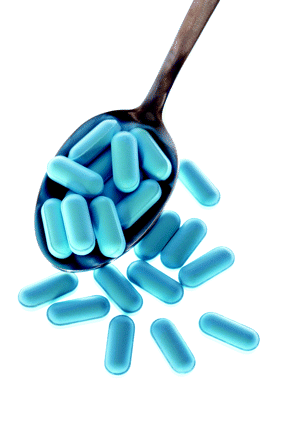
Lasagna et al. concluded that placebo responders do differ from non-responders, but can only be identified by intensive interviews and psychological testing, not by “off-the-cuff” impressions.
Further, placebo responders are not whiners, are not typically of one sex, and not of any particular age bracket. Lasagna et al. felt that consistent responders might be identified in advance by Rorschach testing and presented the following working hypothesis. “There is a certain psychologic set which predisposes to anticipation of pain relief and thus to a positive placebo response. The presence of the traits making this set is probably not an all-or-none phenomenon but a graded one. Other factors…psychologic and non-psychologic, known and unknown, determine whether or not a particular dose of placebo produces an effect on a given patient” (5).
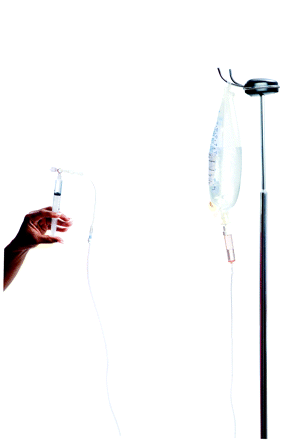
Henry K. Beecher, a colleague of Lasagna’s, authored an influential paper titled “The Powerful Placebo” (6) in which he examined fifteen clinical reports and the placebo responses encountered therein. He states that the fifteen were randomly selected; however, seven of them came from the Beecher-Lasagna group. These studies included 1,082 patients, in whom placebo showed significant effectiveness in 35.2±2.2%. Beecher suggests the small standard error of the mean (2.2%) as evidence that a fundamental common mechanism must underlie these results. Within the fifteen-study meta-analysis, placebo responses generally occurred in 30% 40% of study patients. There were, however, two “outliers”: a headache study with 52% placebo responses and a seasickness study with 58%.
Beecher also describes adverse reactions following placebo administration (later dubbed “nocebo” effects), and even objectively measurable changes [such as adrenocorticotropic hormone (ACTH)-mimetic effects on the cellular components of the blood] following injection of normal saline. He posits that a disease symptom consists of two components—the symptom itself (e.g., pain) and the patient’s “reaction or processing component” (e.g., anxiety or fear). The latter component may be ameliorated by a placebo. To the patient’s psyche, says Beecher, any medicine ordered by the doctor represents the doctor saying “I will take care of you” (6).
Beecher’s view has received more recent support from a 1995 study by Ernst and Resch (7). Taking a more sophisticated approach, these investigators posited an important difference between true and perceived placebo responses. Even absent any treatment a patient may improve for a number of reasons. These include the natural course of the disease, regression of symptom intensity toward the mean, other time-related effects on the patient (e.g., decrease in “white-coat hypertension” as patient becomes more at ease) or the doctor (e.g., physician becomes more skillful), or unidentified concomitant interventions (e.g., hypertensive patients adopt favorable lifestyle changes). Inclusion of a no-treatment arm in a clinical trial would enable one to measure the true placebo effect by subtracting no-treatment results from the perceived placebo results.
Ernst and Resch set out to analyze the results of studies which included both a placebo arm and a no-treatment arm. Such studies, it turns out, are rare. From all clinical trials and meta-analyses published 1986 to 1994, they found only twelve reporting both placebo and untreated groups. Their paper reports on six of these, studies that contained a rating of pain as a clinical endpoint. Comparing the placebo group and untreated group data, they found a substantial true placebo response in four studies, a marginal effect in one, and no effect in one (7).
The Powerful Placebo Under Attack
Frequently cited during the fifty years following its publication, Beecher’s “The Powerful Placebo” became a classic. The placebo response, accepted as a real phenomenon, was widely studied. Yet, some skeptical attitudes were also voiced. In 1997, Kienle and Kiene, in Germany, undertook to refute the entire concept of placebo response by critically examining the validity of Beecher’s paper (8). Although they claimed to have analyzed 800 publications, they focused on the same fifteen studies on which Beecher’s paper was based. They concluded that Beecher had “totally misinterpreted the trials,” and even accused him of misquotation in ten of the fifteen trials he had analyzed. Kienle and Kiene argued that a variety of phenomena have been uncritically attributed as placebo effects by Beecher and the subsequent clinicians who believed in the power of the placebo. Some of the factors which may produce the illusion of a placebo response are: spontaneous improvement (e.g., in the common cold and many other ailments), fluctuation of symptom severity (i.e., especially prominent in chronic disease or chronic pain), additional non-drug interventions (e.g., rest, hot baths, diet), irrelevant response variables (e.g., using subjective feelings instead of objective measurements as endpoints), and experimental subordination (i.e., patient’s desire to please the caring physician by giving favorable answers to questions).
Their view received support, inter alia, from Hrobiartsson and Gotzsche (9) who reviewed randomized clinical trials which included both a placebo and a no-treatment group. The placebos were not limited to dummy drugs and included physical (manipulations) or psychological (therapy sessions) interventions. The review was based on thirty-two trials (total 3795 patients) with binary outcomes and eighty-two (total 4730 patients) with continuous outcomes. In binary outcomes, placebo showed no statistically significant effect as compared to no treatment. In trials with continuous outcomes, placebo showed a beneficial effect which, however, decreased with increasing sample size. There was also a small placebo benefit in the treatment of pain. The authors concluded that the only justification for placebo use is in the clinical trial setting (but not in a one-to-one patient-physician office visit).
Robert Temple, of the Food and Drug Administration (FDA) [see (10)], in his review of the book The Placebo Response and the Power of Unconscious Healing, calls Hrobiartsson’s paper a classic (11). Based on the systematic review reported in that paper, Temple concludes “the best available data thus suggest at most a small effect of placebo, best shown for pain, where at least the known endogenous endorphins provide some mechanistic explanation.” Drawing on his long experience in formulating new drug evaluation policy at the FDA, he states that even in settings where one might expect a placebo effect, such as treatment of hypertension, when automated blood pressure monitoring is used, there is essentially no effect in placebo groups. Temple’s main criticism of the book under review was that the author seems to believe in the reality of the placebo effect (11).
Yet even this is not the last word. A recent JAMA editorial titled “The Power of Hope” calls on physicians to establish and maintain a sense of hope in the patient. It cites neuroim-aging research showing that psychologic factors can stimulate favorable brain physiologic responses, which the authors say may account for elements of the placebo response (12). There is also ongoing discussion and study of a possible association of religious faith, or spirituality, with the process of healing (13).
The Placebo In Clinical Trials
Although the nature, even the reality, of the placebo response continues to be debated, the placebo remains an indispensable tool in clinical research. In the placebo-controlled clinical trial, the presence or absence of a “true” placebo response is irrelevant. The placebo group, or arm, is included to cancel out all changes that are not the result of the treatment under test. It has been suggested that the inactive medicine (or “comparator”) in clinical drug studies should more accurately be called a “dummy” tablet or capsule (14). However, the word “placebo” continues to be the overwhelming favorite, perhaps because no one likes to be associated with a dummy-controlled study.
The double blind, randomized, placebo-controlled trial has become the gold standard for proving effectiveness and safety of a potential new drug. The double blind study is also used in food intolerance testing and even, to some extent, in evaluating new surgical procedures (sham surgery being the control). Strong (14) has traced publications on the “blind” or “double blind” test procedure back to 1937, in a report on the use of theobromine and aminophylline for angina pectoris by Harry Gold of Cornell. The technique was called simply “blind” testing until 1950, when “double blind” became the preferred designation, to make it clear that both the patient and the research staff were blinded as to which drug the patient was being given (14).
The FDA does not require that every study include a placebo control group, and indeed, there are instances where the placebo is dispensed with. Antibiotics may be approved on the basis of comparison with an already accepted antibiotic agent. Giving a placebo is unethical if other adequate, albeit imperfect, remedies exist for a given condition (15). Many orphan drugs are approved on the basis of historical controls, comparing the new drug’s effect with information accumulated in the past on the course of the disease if untreated (16). Nevertheless, the placebo arm is a part of a great many clinical trials conducted for US regulatory approval. Such trials have been criticized as proving merely that the new drug is “better than nothing,” which is indeed faint praise. On the other hand, pharmaceutical firms are loath to compare their new compound to an established drug, honoring the dictum “don’t ask the question if you might not like the answer.”
Lately, much criticism of the active vs placebo study model has centered on the trial data for several widely prescribed antidepressants approved between 1987 and 1999. A 2002 meta-analysis of the FDA database of controlled trials concluded that these drugs demonstrated a clinically negligible advantage over placebo (17). It has recently been suggested that the selective serotonin-reuptake inhibitors (SSRIs) have no advantage over the largely discarded benzodiazapines Librium and Valium, or even over the old tranquilizer meprobamate. It is suggested that the pharmaceutical industry has replaced the above tranquilizers, as well as the superior tricyclic antidepressants and monoamine oxidase (MAO) inhibitors, with the SSRIs simply because the latter are on-patent and thus more profitable (13).
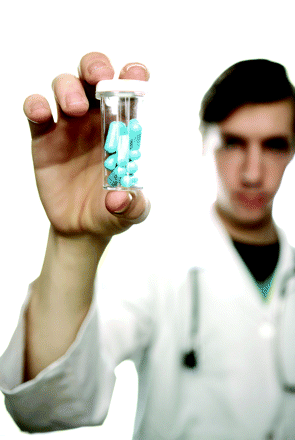
Kirby et al. (18) attempted to analyze why randomized clinical trials in depression and anxiety seem unable to distinguish active drug from placebo. They blame what they call the “site-subject interaction,” a factor which is out of the study sponsor’s control. This interaction includes several characteristics. First, a supportive environment. The quiet, supportive atmosphere of the clinic office, and the comforting attitude of the physician and support staff , often triggers a response independent of the drug administered. Second, penetration of the blind. There is a very human tendency to try to penetrate the blind. Patients are naturally desirous of knowing whether they have been randomly assigned to receive the active drug or the placebo. Based on how they are feeling, they may decide this way or that way. If they decide erroneously in favor of the active, they may feel a favorable effect which will tend to decrease any advantage the active possesses over the placebo. If they erroneously decide that they are receiving placebo, they may experience less therapeutic effect, tending again to disadvantage the active drug. In this way, the final results of the trial may be skewed. The study staff, who know the expected side effects of the active drug, may penetrate the blind on this basis and unwittingly bias the results. Third, unstated expectations by both subject and staff. There is an expectation of benefit by both the subject and the staff. The staff, knowing the study design, know how many active arms there are. Suppose the trial involves two doses of the new drug, one active drug control, and one placebo. This design would lead the staff to expect improvement in three of every four patients. On the part of the subject, expectation of benefit is often enhanced by over-sell of the investigational product during the consent process or during an orientation session (18).
To avoid the effects of the site-subject interaction, Kirby (18), and others, have suggested a rather radical approach—the “triple blind” study. Not only are patient, physician, and other study site personnel blinded, but the periodic evaluation of the patient’s condition is done by an outside “rater.” The rater is blinded by not being given access to the patient’s chart, thus being unaware of any side effects or ancillary patient data; not informed as to study design and randomization ratio; and allowed only minimal contact with the patient. This may reduce to a minimum any subjective influences on the rater’s activity, but it adds another level of artificiality to the patient’s care, which itself may affect the validity of the study results.
Now that the placebo is exclusively a research tool, modern dictionaries have modified its definition to “an inert or innocuous substance used especially in controlled experiments testing the efficacy of another substance (as a drug)” (19). By this, as well as by its original definition, the placebo is inert and inactive. Nevertheless, it has become the center of two complex controversies: the question whether non-material factors can influence the healing process; and the question of how best to use it, if at all, in human clinical trials. The 1811 definition of the placebo is now approaching its bicentennial. The issues surrounding the placebo are unlikely to have been resolved when that anniversary year is reached.
Addendum
Continuing interest in the placebo and placebo effects is evidenced by a newly published (2009) monograph titled Placebo Effects: Understanding the Mechanisms in Health and Disease. The author, Fabrizio Benedetti, is Professor of Clinical and Applied Physiology at the University of Turin Medical School, as well as a consultant for the Placebo Project at the National Institutes of Health (NIH). At Turin, he heads what is considered the foremost laboratory in the world for the study of placebo effects. His group conducts brain imaging studies, as well as other types of studies, to elucidate placebo responses.
A review of Benedetti’s book in the New England Journal of Medicine notes that his approach to the subject is sophisticated, even-handed, and devoid of romanticism (20). His presentation of data on placebo effects is organized by organ systems, and also points out organ systems whose response to placebo has been little studied thus far. Benedetti stresses that the standard randomized, double-blind, placebo controlled clinical trial does not detect true placebo effects, and states that multi-armed (possibly impracticable) studies would be required to answer key questions about placebos.
- © American Society for Pharmacology and Experimental Theraputics 2009
References
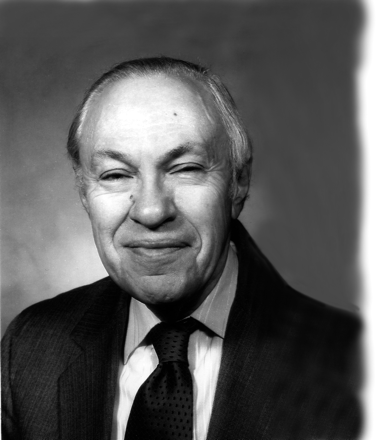
Stanley Scheindlin, DSc, holds a BS in pharmacy from Temple University and graduate degrees in pharmaceutical chemistry from Philadelphia College of Pharmacy and Science (now University of Sciences in Philadelphia). His academic research dealt with plant constituents and chemical interactions of vitamins. In his pharmaceutical industry career, he handled new drug formulation developments, and later regulatory affairs, presiding over the filing of about 100 generic new drug applications and two innovative drug applications. Now retired, his activities include volunteer work, consulting, and writing Reflections pieces for this journal. E-mail: stansch{at}verizon.net

